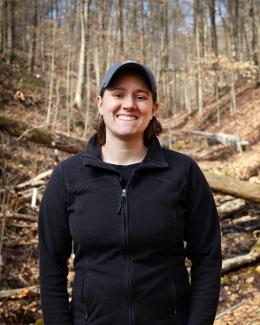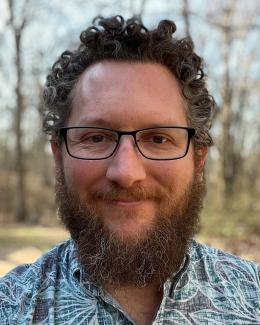Project Details

The southeastern United States has the greatest freshwater biodiversity of any temperate region in the world supporting diverse populations of mussels (>250 species), snails (>300 species), crayfish (>350 species), and freshwater fish (>550 species). Globally, factors like habitat changes, climate change, and other stressors have led to unprecedented declines in biodiversity, with freshwater systems being particularly vulnerable to biodiversity loss.
Oak Ridge National Laboratory's (ORNL’s) Biological Monitoring and Abatement Program (BMAP) was designed and implemented in the mid 1980’s with recognition of the intrinsic link between water quality and aquatic biodiversity. While poor water quality can directly lead to toxicity and decreases in biodiversity, loss of biodiversity can also negatively impact water quality by removing key functions from an ecosystem.
Originally founded to monitor the effectiveness of remediation actions in streams following impacts from Department of Energy (DOE) activities on the Oak Ridge Reservation in East Tennessee, BMAP is now an internationally recognized biological monitoring program that is a valuable case study for DOE and the nation.
BMAP uses an integrated approach for determining stream health, quantifying key metrics to assess both water quality and biodiversity, including concentrations and bioaccumulation of contaminants, fish and invertebrate community taxa richness, and laboratory-based standardized tests of toxicity for aquatic organisms. The program evaluates Tennessee Water Quality Criteria (as required in the National Pollutant Discharge Elimination System permit) by conducting studies to assess bioaccumulation of contaminants of concern and the receiving streams’ biological integrity.

Over the past three decades, BMAP has been successful in evaluating the effects of multiple stressors on aquatic ecosystems and has provided data for human and ecological risk assessments as well as actionable information in the design and application of remediation technologies, pollution abatement actions, and watershed best management practices. The program assesses spatial and temporal change and has documented substantial ecological recovery in response to various facility actions. BMAP results have become a key measure of how well the DOE facilities are doing relative to protecting the environment and provide assurance to regulators and the public that stream conditions are improving.
DOE’s mission and environmental management in Oak Ridge will continue to evolve as new biological monitoring and data analysis tools mature, environmental and land use changes become apparent, and facilities are modernized. BMAP researchers are advancing monitoring techniques by developing new technology and evaluating novel methods’ robustness compared to traditional metrics. Examples of these include species detection through methods, including DNA barcoding, environmental DNA sampling, remote sensing, and acoustic monitoring.
Key to incorporating these data sets into the long-term monitoring program is the development of empirical and theoretical frameworks to link data sets across spatial and temporal scales as well as across levels of biological organization. Many changes are expected at the DOE Oak Ridge Reservation Site and across the nation in response to infrastructure modernization efforts in the next few years. These changes would potentially affect the nation’s aquatic resources. The integrated approach developed by BMAP provides a vital and systematic way of measuring ecosystem health in response to these changes as well as future environmental changes.
Contact





